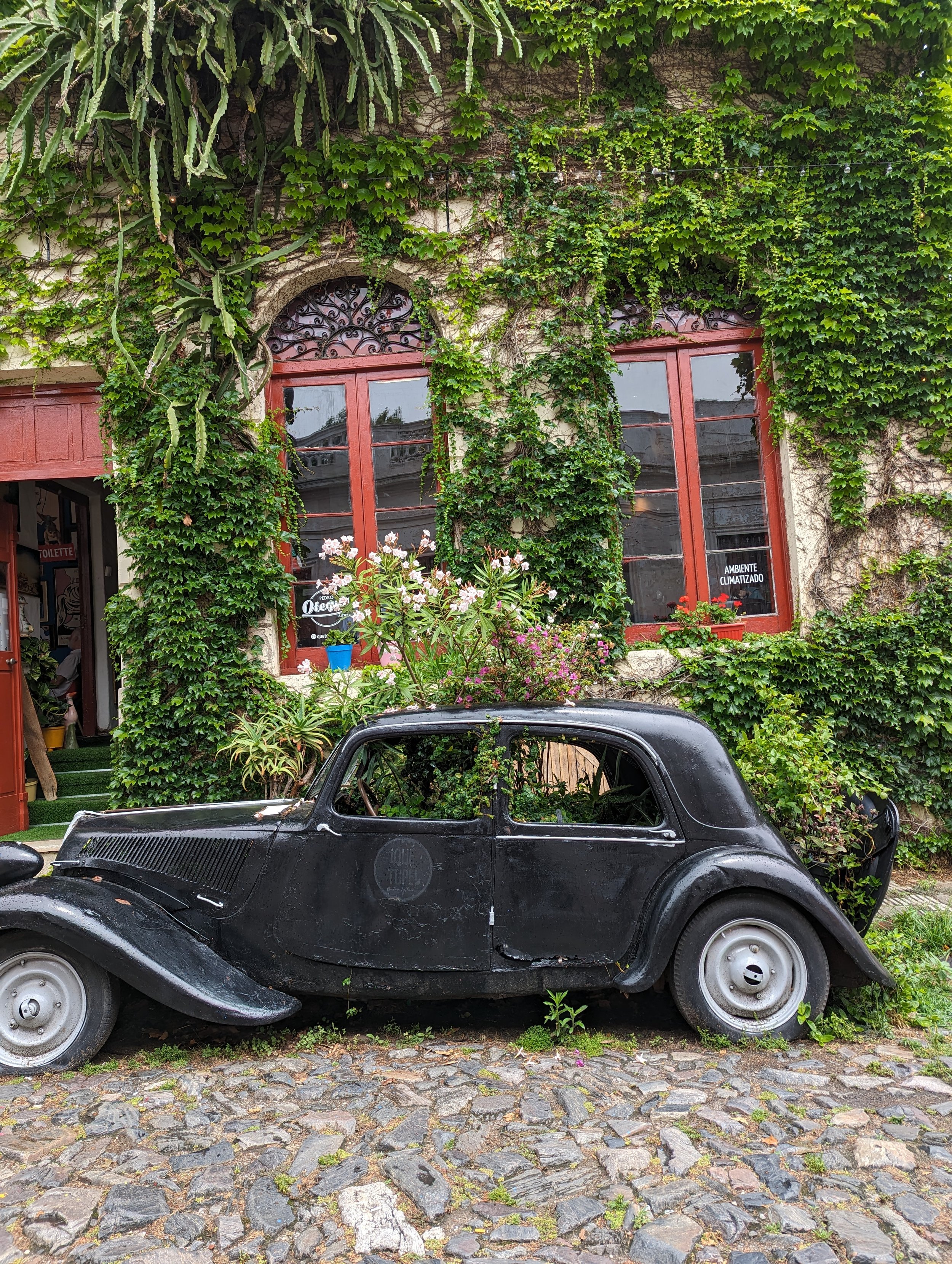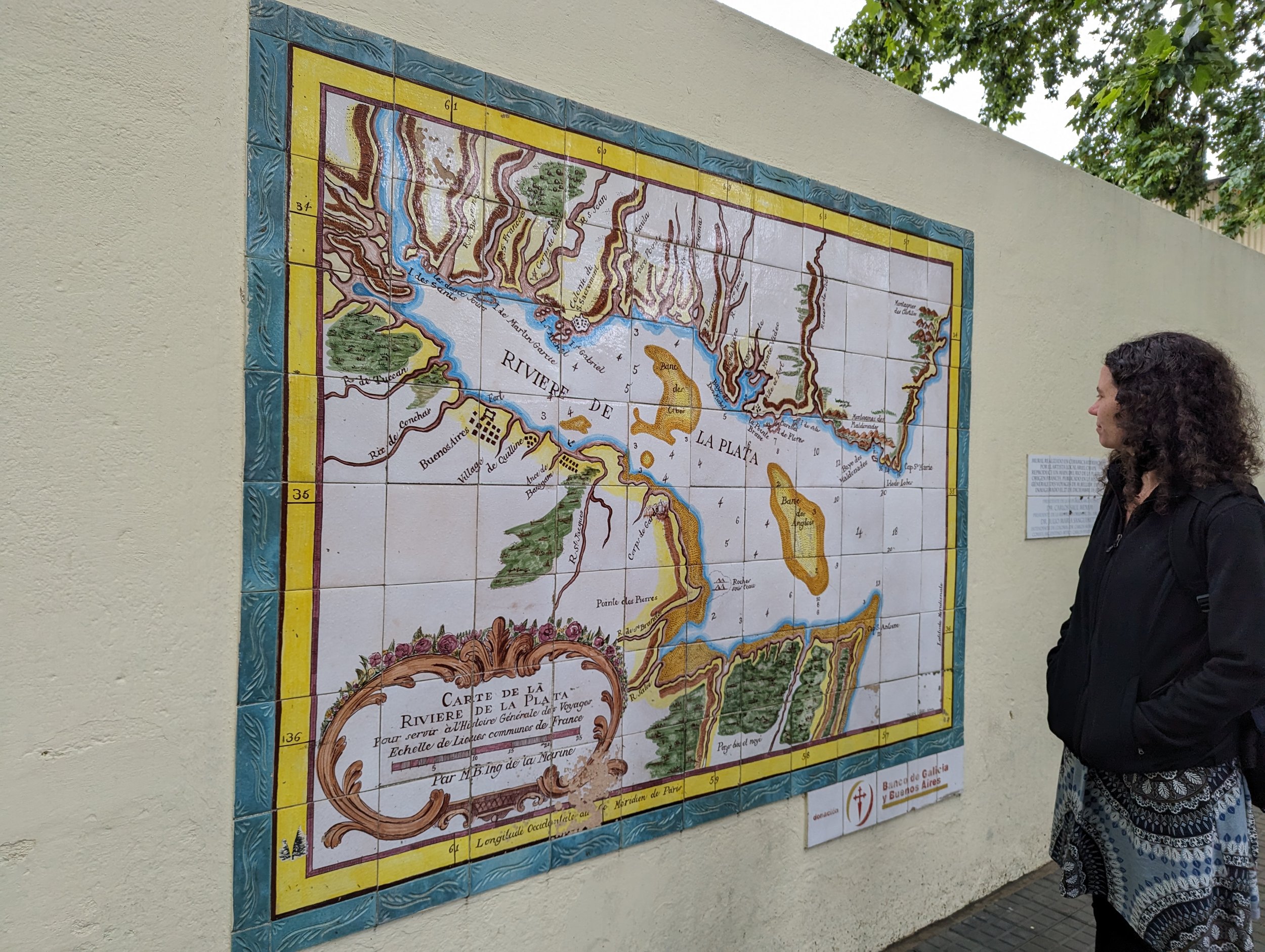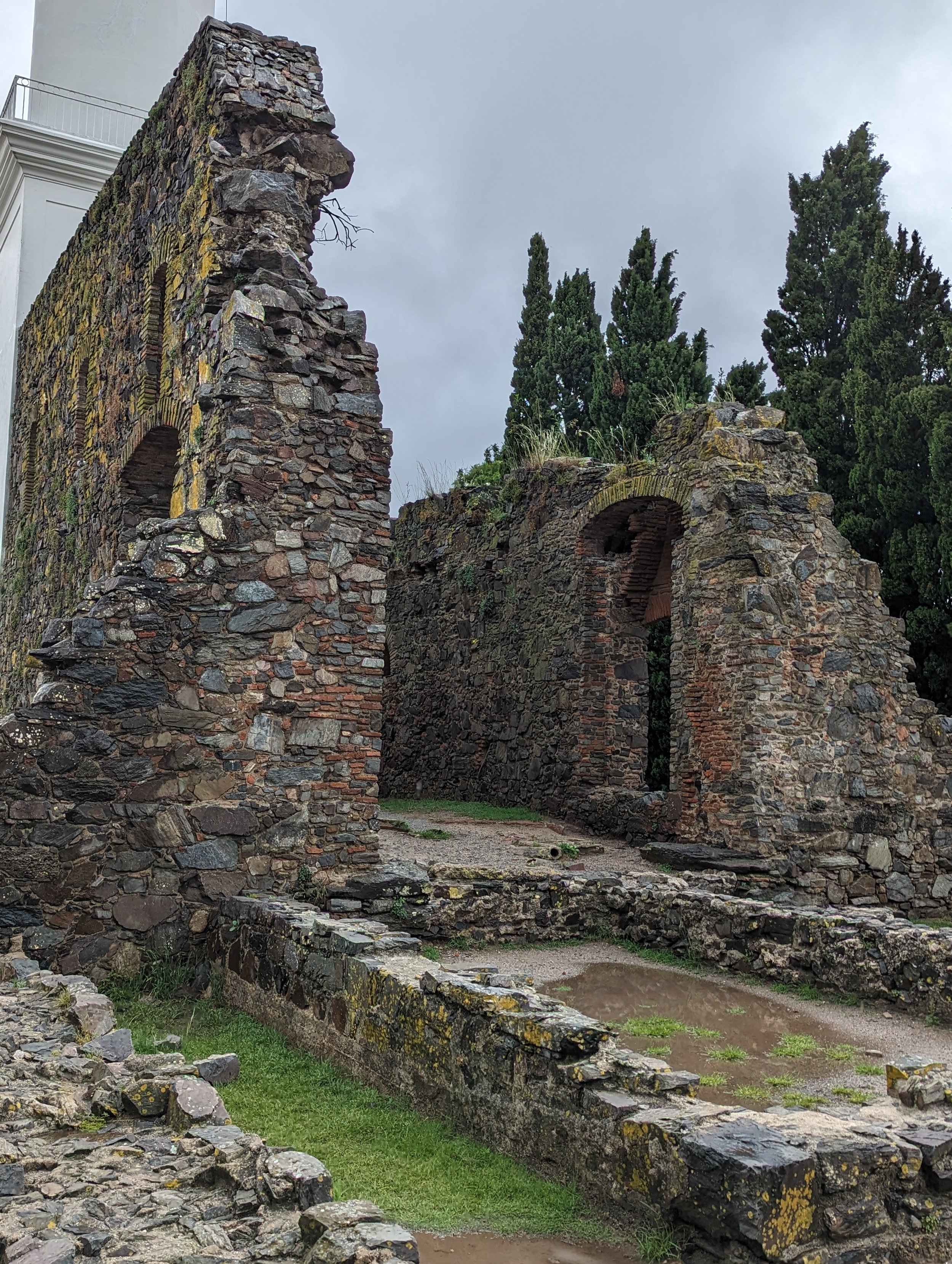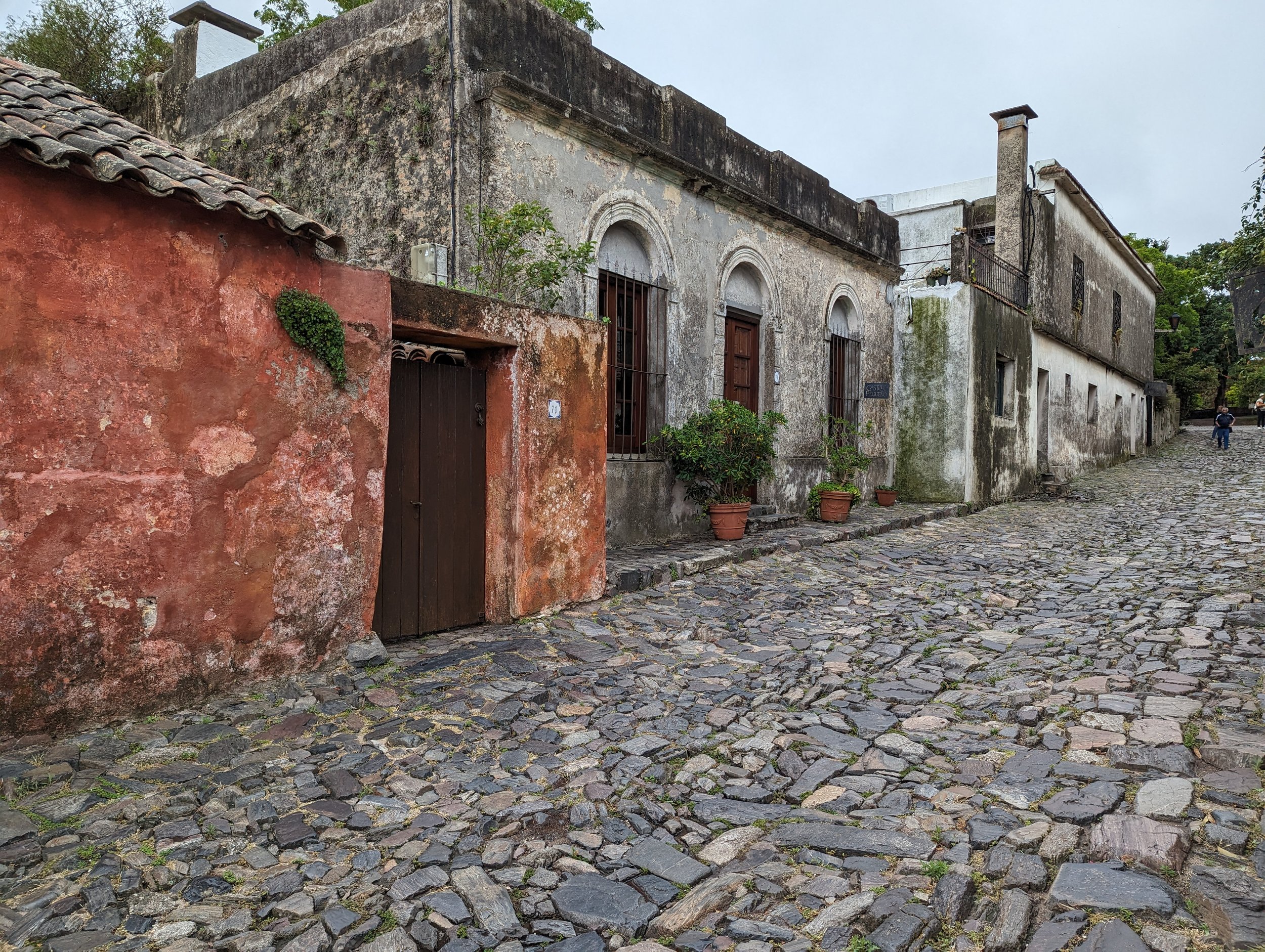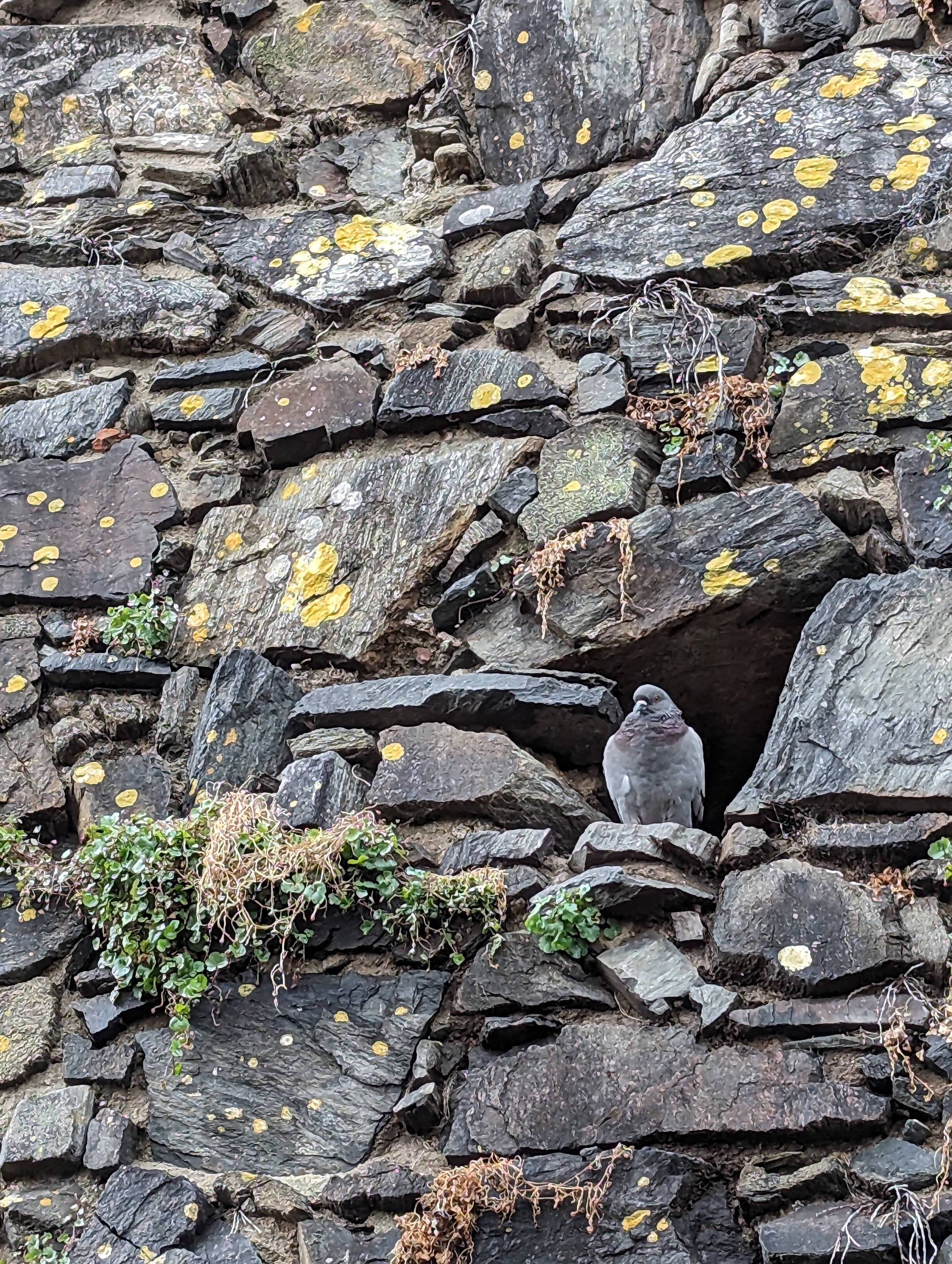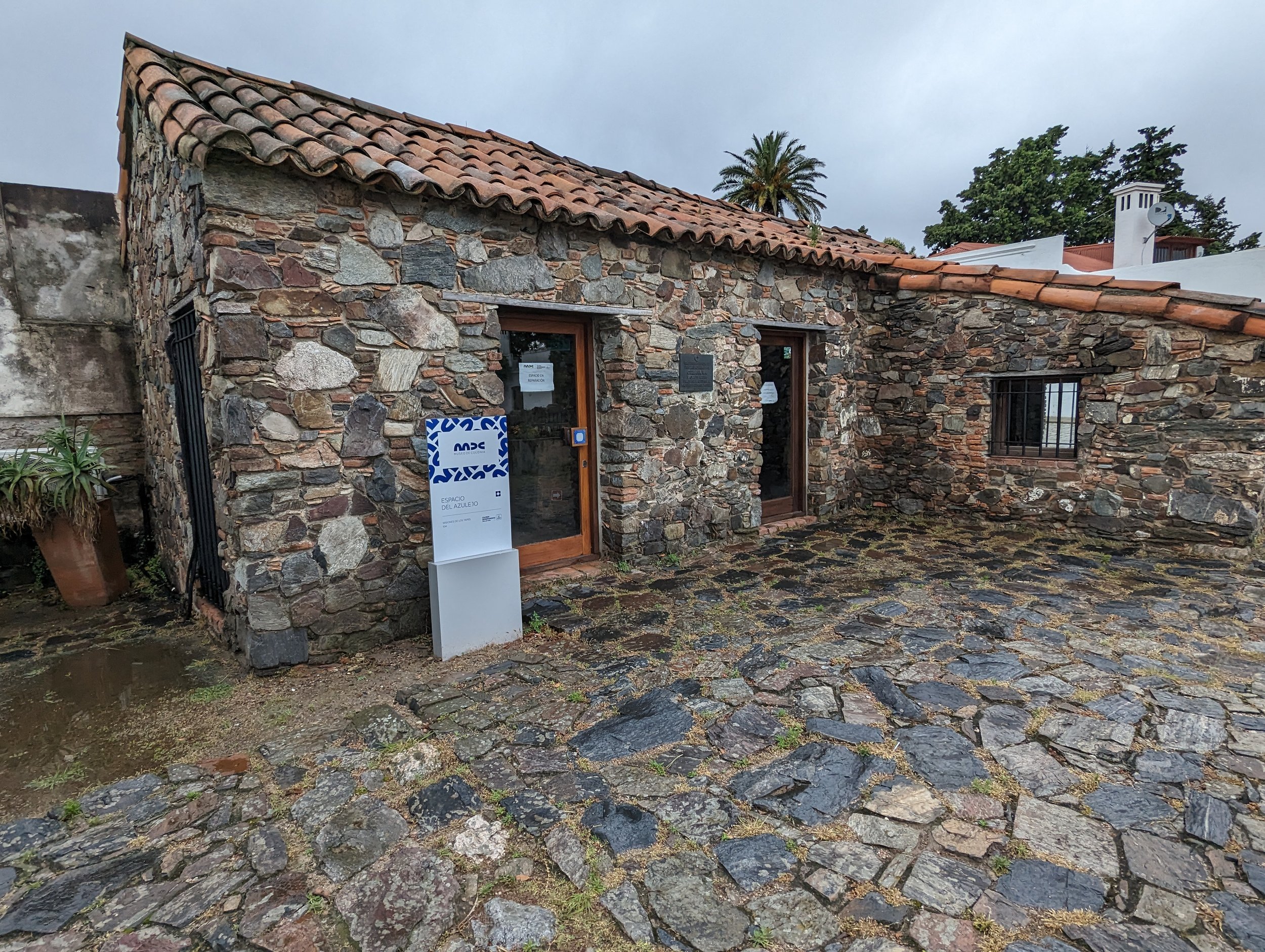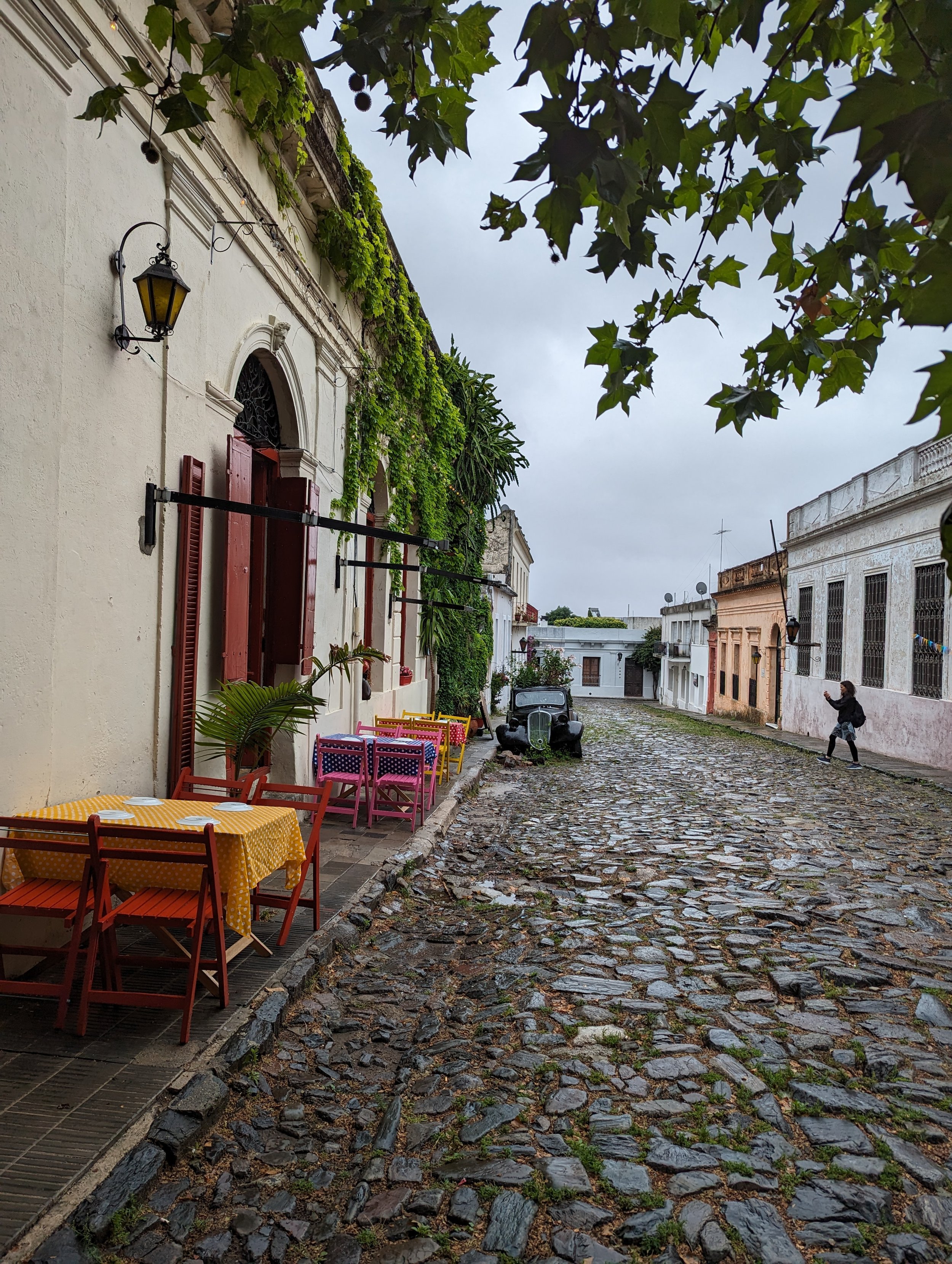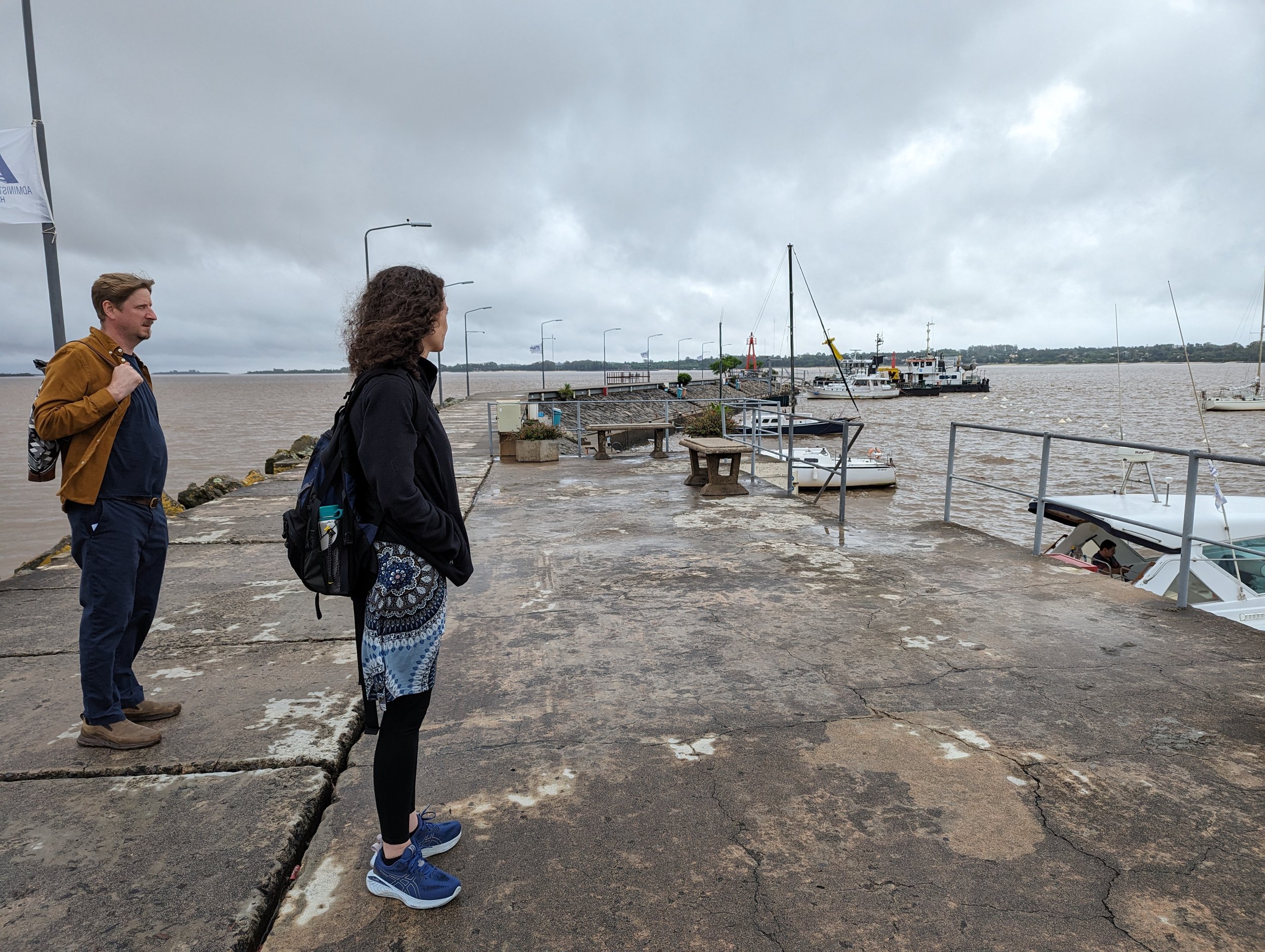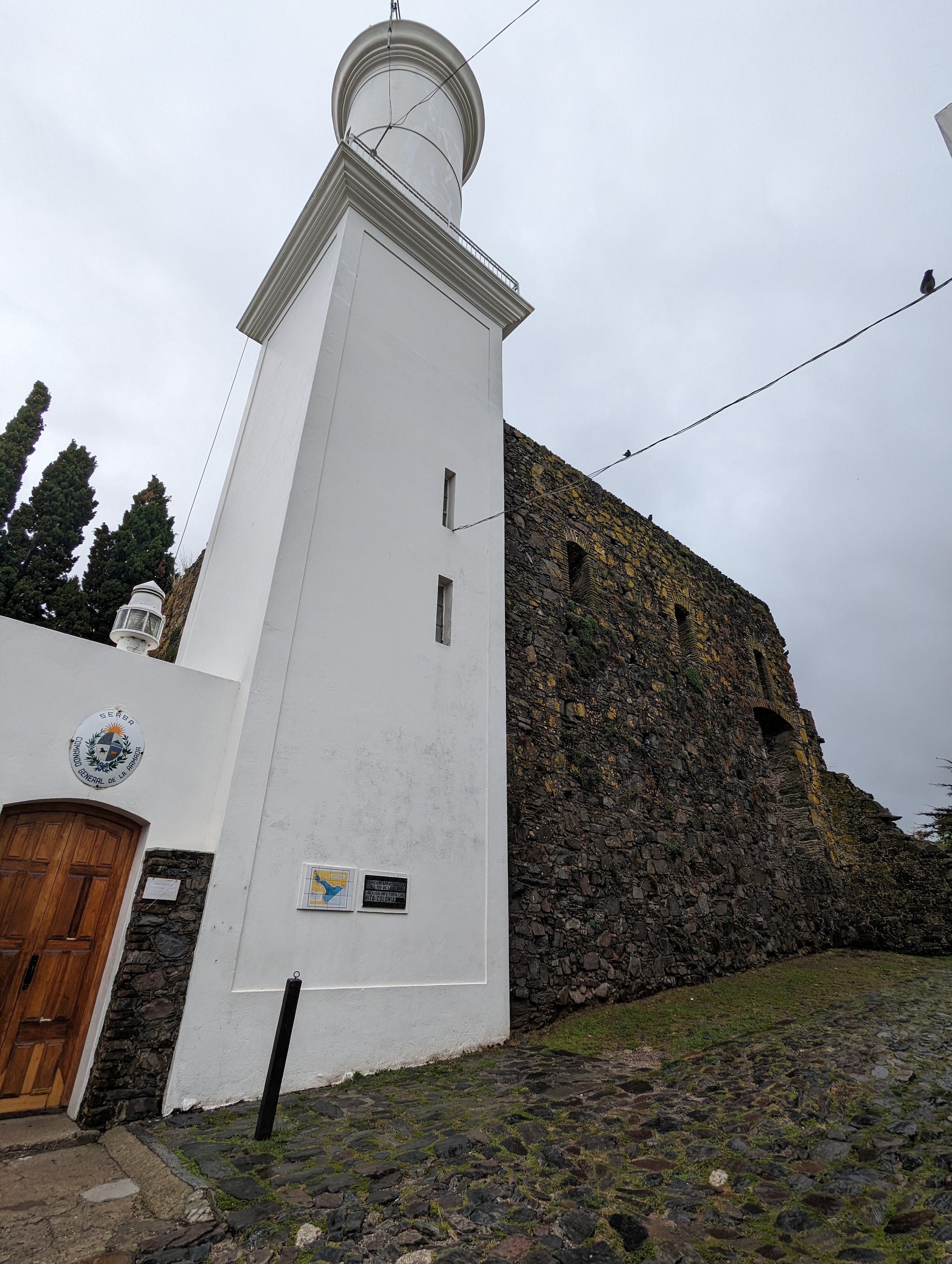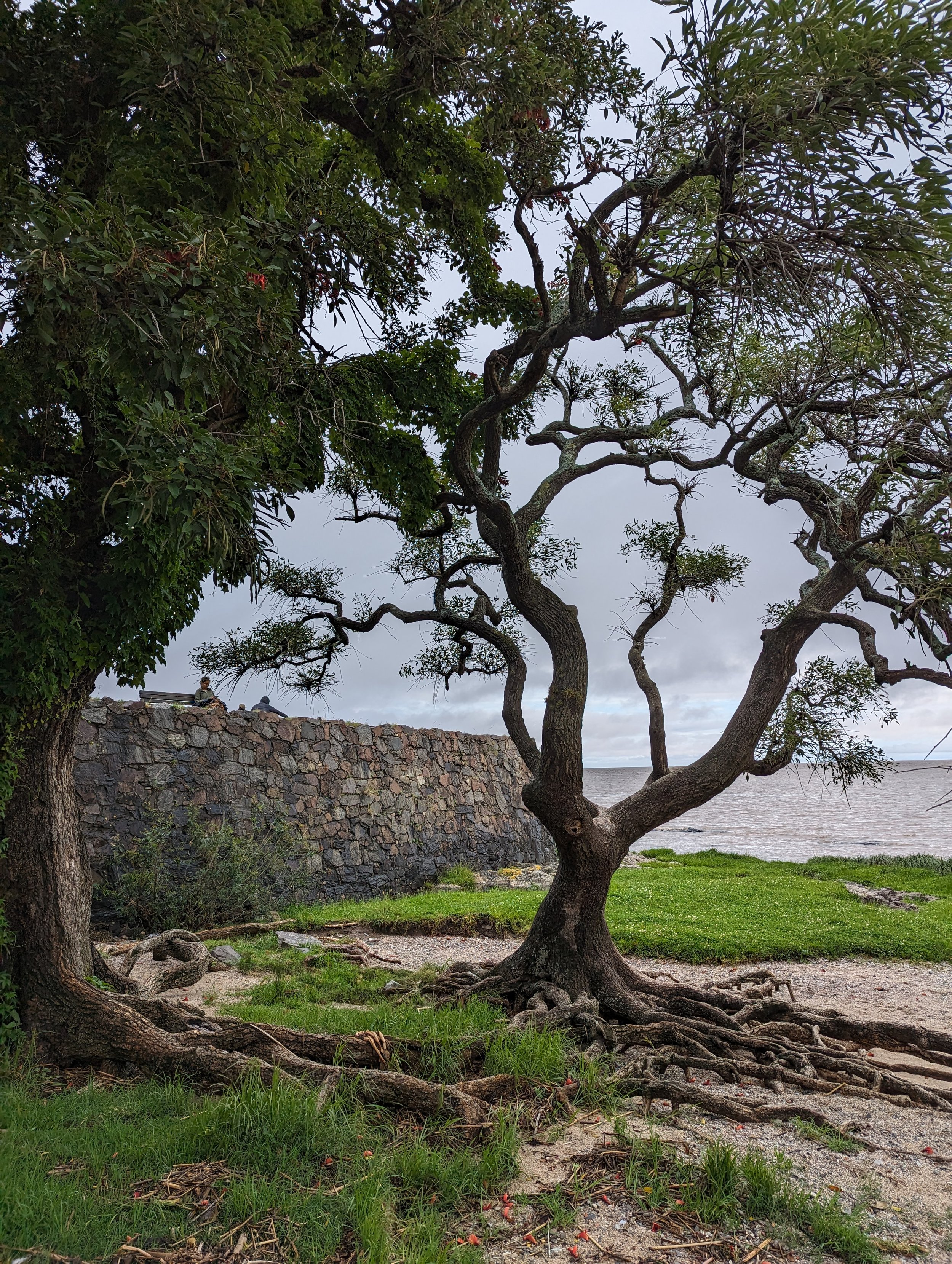Argentine bureaucracy is alive and well
We had to check in 1.5 hours before the ferry (which takes slightly less than two hours to cross to Colonia). Argentine migration loves a line: check in; security/TSA; outmigration for Argentina; immigration for Uruguay — and that’s just on the Argentina side, as we also had to go through migration and scanning machines on the Uruguay side. Whew!
Rainy day
I signed up for a walking tour and decided to take it in Spanish. The guide began the tour, but about five minutes in, a downpour started. We ducked under an awning, and she had a bus come pick us up, drive us around Colonia, and gave us a tour of all but the historic downtown. Somehow, I had expected a tour of the historic buildings. On the positive side, we got a good idea of the newer parts of town, the bullring that only served as a bullring for a few years and now houses concerts; the Sheraton; the old casino that drew folks from Buenos Aires back in the day, and the rambla along the coast of the river, where residents of Colonia usually gather to watch the sunset.
The bus dropped us at the historical area of town, and the guide disappeared. We were left to wander about on our own. I am sure Colonia is even more beautiful on a sunny day, but we had a wonderful time roaming the tiny town. After the noise and bustle of Buenos Aires, the bird song and quiet along the other side of the Rio de la Plata felt soothing.
Historical sites
I did not attack the historical sites in any order, choosing to wander around and discover unusual places. I found the rebuilt gate to the citadel, the lighthouse, the Street of Sighs, the big Portuguese style church at the top of the old town, the outside of the Azulejos museum (closed for renovation), the Franciscan convent ruins, the main plaza, the rambla along the river, the bastion de San Miguel along the river, the yacht club and pier, and archaeological digs below the sidewalk surface that had a protected cut-out area so you could see the original fort walls.
Food!
When the rain started in earnest, everyone headed for the nearest restaurant, Que Tupé!. I shared a meal with Mel and Cat: local fish, veggies, wine, and flan (of course). The cost of food in Uruguay more than doubled what we would have spent in Buenos Aires: $35 USD for lunch, instead of $6-15 USD.


